Xiong Deng
Interpretable Cross-Sphere Multiscale Deep Learning Predicts ENSO Skilfully Beyond 2 Years
Mar 27, 2025Abstract:El Ni\~no-Southern Oscillation (ENSO) exerts global climate and societal impacts, but real-time prediction with lead times beyond one year remains challenging. Dynamical models suffer from large biases and uncertainties, while deep learning struggles with interpretability and multi-scale dynamics. Here, we introduce PTSTnet, an interpretable model that unifies dynamical processes and cross-scale spatiotemporal learning in an innovative neural-network framework with physics-encoding learning. PTSTnet produces interpretable predictions significantly outperforming state-of-the-art benchmarks with lead times beyond 24 months, providing physical insights into error propagation in ocean-atmosphere interactions. PTSTnet learns feature representations with physical consistency from sparse data to tackle inherent multi-scale and multi-physics challenges underlying ocean-atmosphere processes, thereby inherently enhancing long-term prediction skill. Our successful realizations mark substantial steps forward in interpretable insights into innovative neural ocean modelling.
Spectral and Energy Efficiency of DCO-OFDM in Visible Light Communication Systems with Finite-Alphabet Inputs
Feb 02, 2022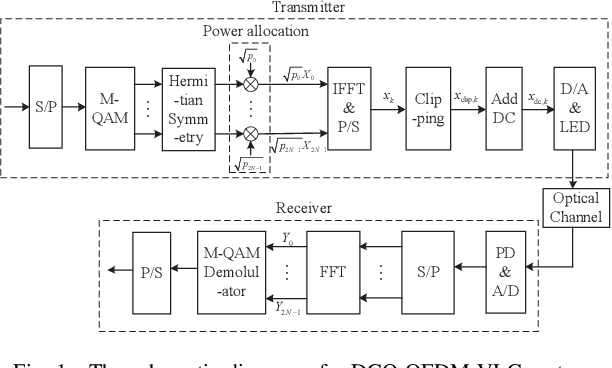
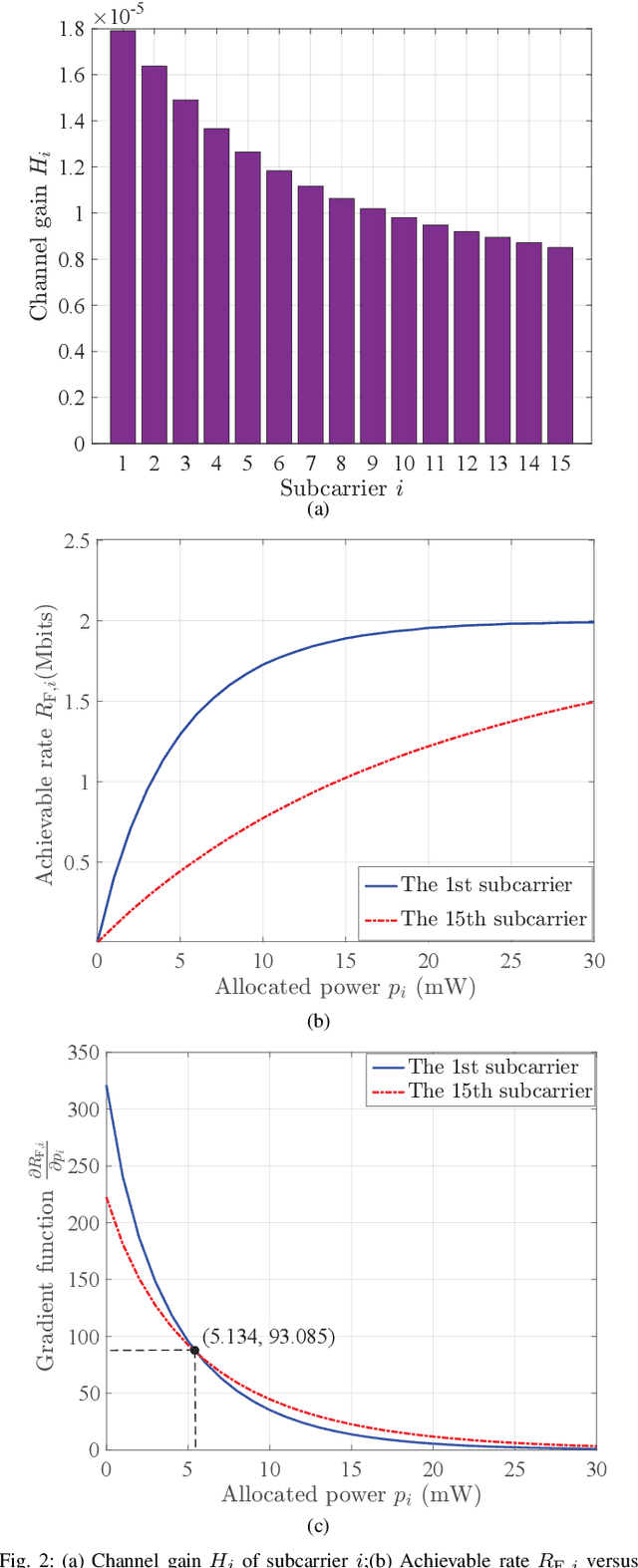
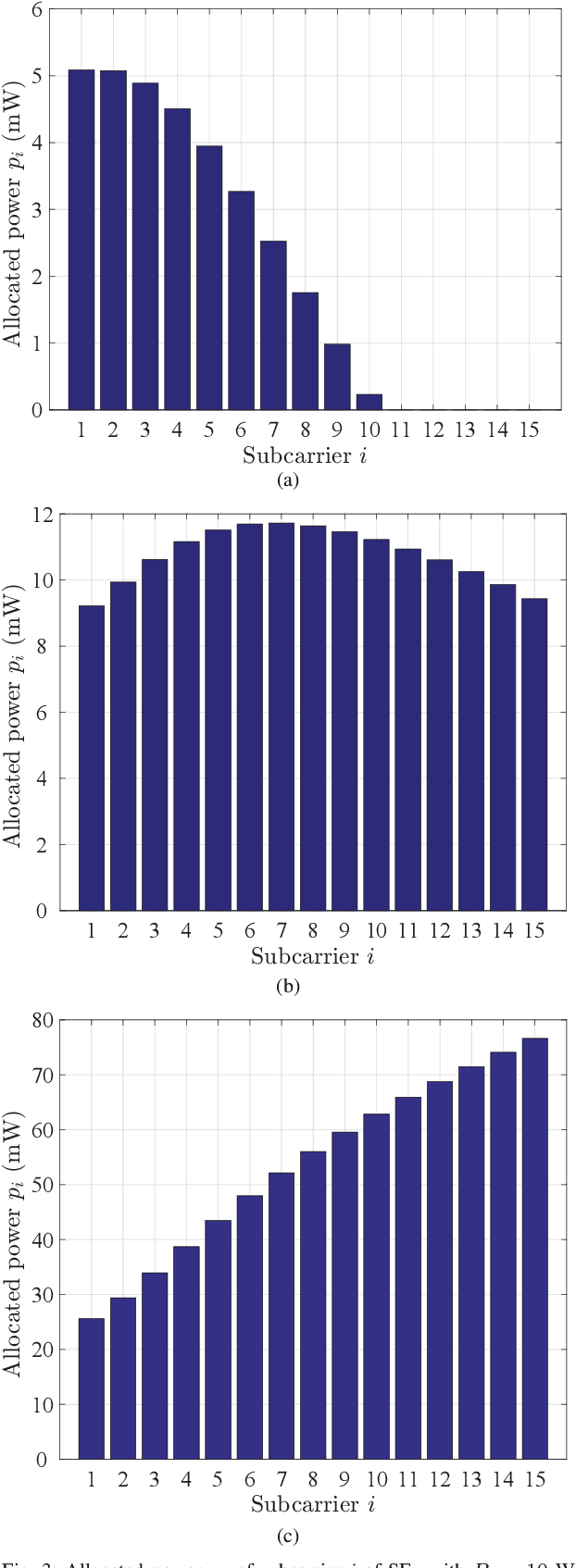
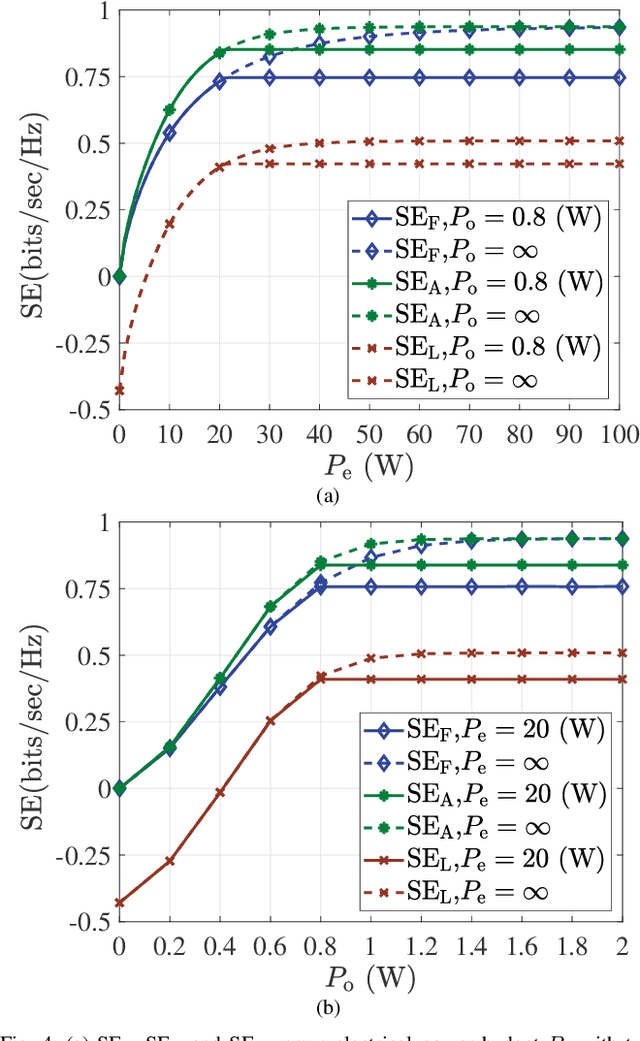
Abstract:The bound of the information transmission rate of direct current biased optical orthogonal frequency division multiplexing (DCO-OFDM) for visible light communication (VLC) with finite-alphabet inputs is yet unknown, where the corresponding spectral efficiency (SE) and energy efficiency (EE) stems out as the open research problems. In this paper, we derive the exact achievable rate of {the} DCO-OFDM system with finite-alphabet inputs for the first time. Furthermore, we investigate SE maximization problems of {the} DCO-OFDM system subject to both electrical and optical power constraints. By exploiting the relationship between the mutual information and the minimum mean-squared error, we propose a multi-level mercury-water-filling power allocation scheme to achieve the maximum SE. Moreover, the EE maximization problems of {the} DCO-OFDM system are studied, and the Dinkelbach-type power allocation scheme is developed for the maximum EE. Numerical results verify the effectiveness of the proposed theories and power allocation schemes.
* 14 pages, 14 figures, accepted by IEEE Transactions on Wireless Communications
Spectral and Energy Efficiency of ACO-OFDM in Visible Light Communication Systems
Aug 31, 2021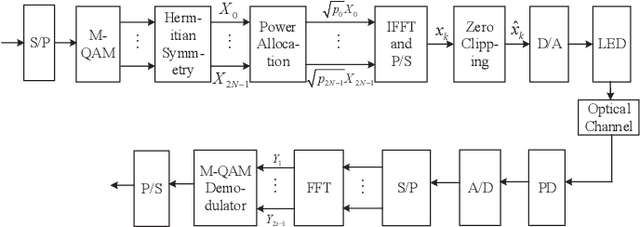
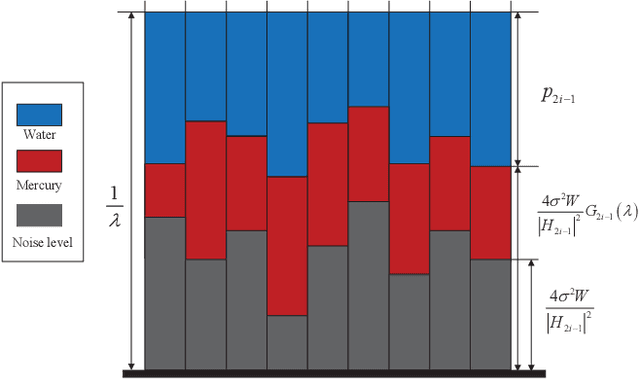
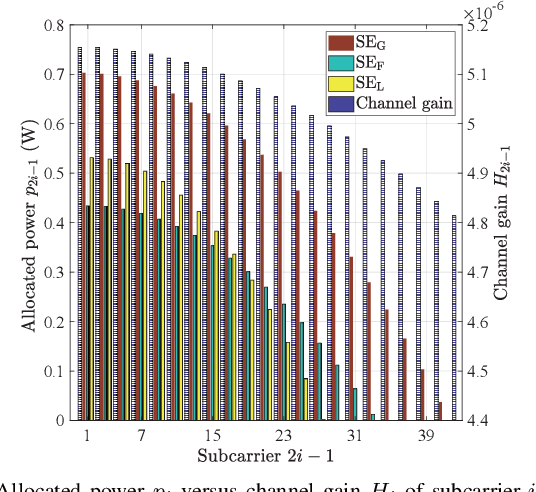
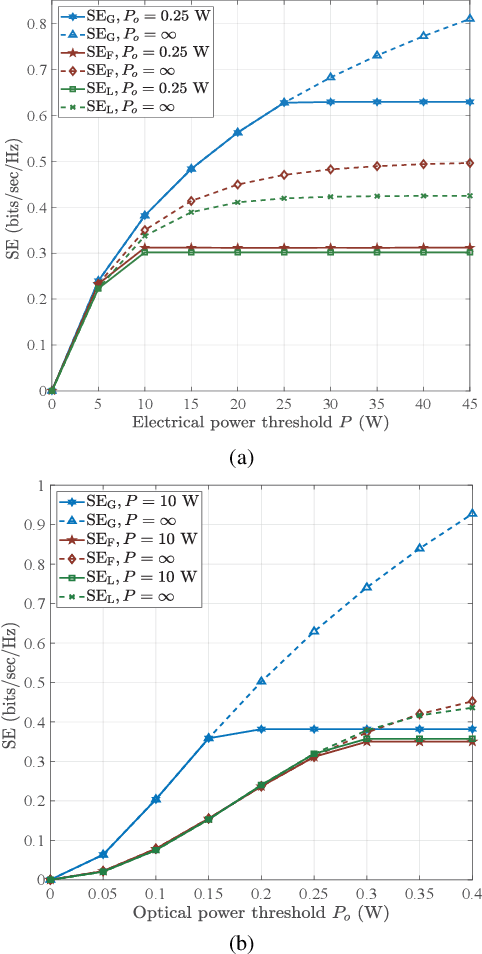
Abstract:In this paper, we study the spectral efficiency (SE) and energy efficiency (EE) of asymmetrically clipped optical orthogonal frequency division multiplexing (ACO-OFDM) for visible light communication (VLC). Firstly, we derive the achiev-able rates for Gaussian distributions inputs and practical finite-alphabet inputs. Then, we investigate the SE maximization problems subject to both the total transmit power constraint and the average optical power constraint with the above two inputs, respectively. By exploiting the relationship between the mutual information and the minimum mean-squared error, an optimal power allocation scheme is proposed to maximize the SE with finite-alphabet inputs. To reduce the computational complexity of the power allocation scheme, we derive a closed-form lower bound of the SE. Also, considering the quality of service, we further tackle the non-convex EE maximization problems of ACO-OFDM with the two inputs, respectively. The problems are solved by the proposed Dinkelbach-type iterative algorithm. In each iteration, the interior point algorithm is applied to obtain the optimal power allocation.The performance of the proposed power allocation schemes for the SE and EE maximization are validated through numerical analysis.
 Add to Chrome
Add to Chrome Add to Firefox
Add to Firefox Add to Edge
Add to Edge